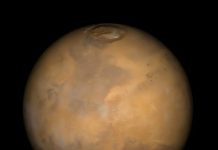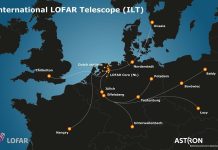
For the first time, astronomers have detected what might be signs of biological activity on a planet outside our solar system.
The discovery comes from the James Webb Space Telescope (JWST), which picked up chemical fingerprints of two molecules, dimethyl sulfide (DMS) and dimethyl disulfide (DMDS), in the atmosphere of an exoplanet called K2-18b.
This planet, located 124 light-years away in the constellation of Leo, orbits its star in what’s known as the “habitable zone,” where temperatures could allow liquid water to exist.
On Earth, DMS and DMDS are only produced by life, primarily by marine microorganisms like phytoplankton.
The fact that these molecules have been detected on K2-18b is a major hint that life might exist there, although scientists are still cautious.
They acknowledge that some unknown chemical process might also be responsible for these signals. But even with that caution, the detection is the strongest evidence yet of possible biological activity beyond our solar system.
The strength of this evidence is measured by what scientists call “sigma levels.” Right now, the observations of DMS and DMDS on K2-18b have reached a “three-sigma” level of statistical significance.
This means there’s only a 0.3% chance that the data happened by random coincidence.
To officially confirm the finding as a discovery, it would need to reach the “five-sigma” level, reducing the chance of error to just 0.00006%. To reach that level, researchers estimate they would need between 16 and 24 more hours of observation time with the JWST.
K2-18b is no ordinary planet. It’s 8.6 times the mass of Earth and about 2.6 times larger. Scientists think it’s what they call a “Hycean” planet—an ocean-covered world with a thick, hydrogen-rich atmosphere.
Earlier observations of K2-18b had already identified methane and carbon dioxide in its atmosphere, marking the first time carbon-based molecules were found on a planet in the habitable zone outside our solar system.
The new observations were carried out using JWST’s Mid-Infrared Instrument (MIRI), which captured signals in the mid-infrared range of light (6-12 microns). This method is different from earlier scans that used JWST’s NIRISS and NIRSpec instruments, which measure near-infrared light.
This independent method strengthened the findings, as it confirmed the signals seen in previous observations with different technology.
Professor Nikku Madhusudhan from Cambridge’s Institute of Astronomy, who led the research, expressed his excitement over seeing the results hold steady through repeated testing and different observation methods.
While the presence of DMS and DMDS is thrilling, scientists are careful not to jump to conclusions. The levels detected on K2-18b are much higher than those found on Earth—thousands of times stronger, in fact.
This matches some earlier theories that sulfur-based gases could be abundant on Hycean worlds. But it’s also possible that there are other, non-biological processes creating these gases. The team is planning more observations and experiments to explore this possibility.
Professor Madhusudhan remains hopeful yet realistic. He emphasizes the need for more data and constant testing before claiming a definitive discovery of life.
Co-author Subhajit Sarkar of Cardiff University and Savvas Constantinou from Cambridge’s Institute of Astronomy agree, stating that this discovery is just the beginning of a deeper investigation.
While there’s still a long road ahead, the discovery of these potential biosignatures marks an important step forward in the search for life beyond Earth.
Madhusudhan believes this moment could one day be seen as the tipping point when humanity finally began to answer the age-old question: Are we alone in the universe?
As technology advances and telescopes become more powerful, the dream of discovering life beyond Earth seems closer than ever.
Source: University of Cambridge.



